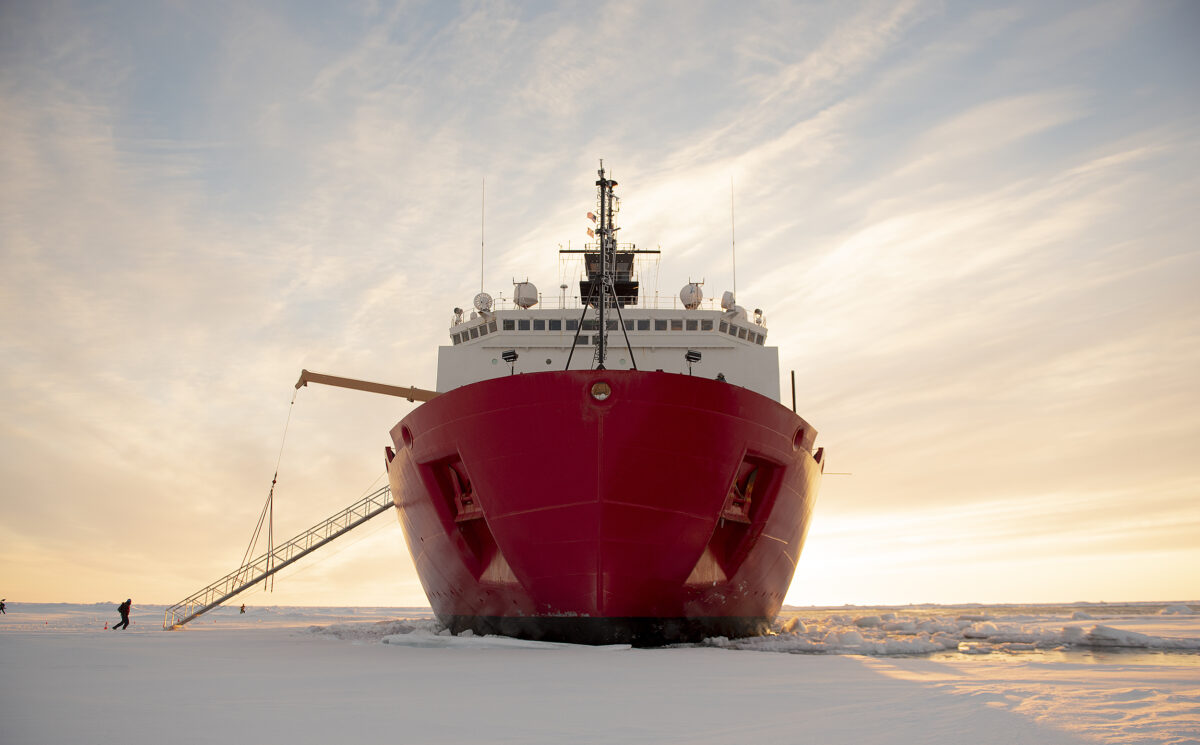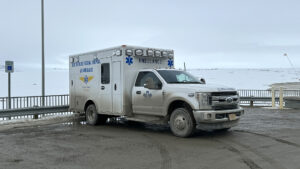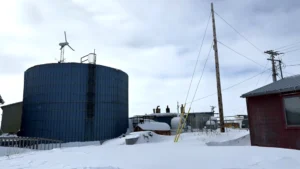Coast Guard vessels stationed in Western Alaska have left Arctic waters for the season and are now preparing for their next assignments.
Last week, the Coast Guard cutter Alex Haley returned to homeport in Kodiak after a 66-day multi-mission patrol. The USCG cutter Healy went back home to Seattle following four months in the Arctic.
The Alex Haley spent the last two months patrolling the Bering Sea and the Aleutian chain from Adak to St. Lawrence Island. According to a statement from USCG, the crew conducted boarding evolutions on the Alaskan crabbing and fishing fleet and responded to four separate search-and-rescue cases, covering a total of almost 9,000 miles of water.
Cmdr. Jon Kreischer, commanding officer of the Alex Haley, called their stint in the Bering Sea “highly productive.”
From the science side of things, the USCG Healy crew was also very productive during their time in the Arctic.
According to a press release from the Coast Guard, the Healy was involved in three research ventures in partnership with the National Science Foundation, the National Oceanic and Atmospheric Administration, and the Office of Naval Research.
USCG spokesperson for the Pacific region, Senior Chief NyxoLyno Cangemi, says some of these missions focused on the oceanography and marine ecosystem of the Arctic, including areas within the Beaufort and Chukchi Seas.
“Coast Guard cutter Healy went underway (in September) with a team of about 30 scientists led by Dr. Lee of the Applied Physics Lab in Seattle, and they were studying the stratified ocean dynamics in the Arctic (S.O.D.A.), which is studying how environmental factors, such as wind and solar radiation and temperature, affect the mixing of the water layers of the Arctic Ocean.”
According to the Senior Chief, there’s a heavy demand every summer from scientists and scientific organizations to use the Healy and Coast Guard resources for the purpose of research in Arctic waters. With only two icebreakers in its entire fleet, though, the Coast Guard’s capabilities are limited.
“Supporting future research of the Arctic is going to absolutely involve recapitalization of our fleet and obtaining more icebreakers, especially to work in those high latitudes.”
Cangemi says building a new icebreaker will cost upwards of $1 billion, and Congress hasn’t yet appropriated the funds to do so. Once that large sum of money is available, the Coast Guard estimates it will still take five to ten years to build the new vessel.
From Cangemi and USCG’s perspective, having a larger presence in the Arctic is crucial for the United States.
“The missions that we have up in the Arctic and in Antarctica are crucially important to the nation’s interests, and recapitalizing, building up that fleet in order for us to remain a competitive nation with countries such as Russia and China. It’s imperative that we start looking at this area as an area of importance for the nation.”
For now, the cutter Healy is preparing for a “dry dock” period with maintenance and upgrades, as its schedule is planned out for next year’s deployment in the Arctic. USCG’s other icebreaker, the Polar Star, is currently on its way to Antarctica for its annual deployment to support research on the frozen continent.
Image at top: The U.S. Coast Guard cutter Healy on the ice Wednesday, Oct. 3, 2018, about 715 miles north of Barrow, Alaska. Photo: NyxoLyno Cangemi, U.S. Coast Guard.





